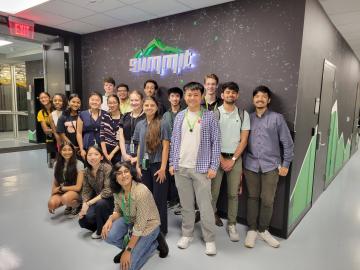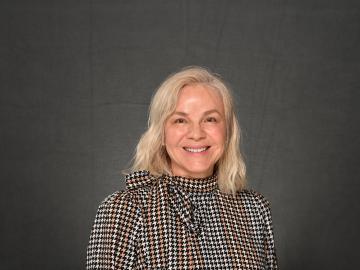Filter News
Area of Research
- (-) Fusion and Fission (54)
- (-) Supercomputing (311)
- Advanced Manufacturing (34)
- Biological Systems (18)
- Biology and Environment (177)
- Biology and Soft Matter (5)
- Building Technologies (12)
- Chemical and Engineering Materials (4)
- Chemistry and Physics at Interfaces (11)
- Clean Energy (522)
- Climate and Environmental Systems (14)
- Computational Biology (6)
- Computational Chemistry (5)
- Computational Engineering (5)
- Computer Science (19)
- Data (1)
- Earth Sciences (1)
- Electricity and Smart Grid (3)
- Energy Frontier Research Centers (14)
- Energy Sciences (5)
- Fossil Energy (3)
- Fuel Cycle Science and Technology (3)
- Functional Materials for Energy (16)
- Fusion Energy (17)
- Geographic Information Science and Technology (3)
- Isotope Development and Production (3)
- Isotopes (35)
- Materials (432)
- Materials Characterization (2)
- Materials for Computing (36)
- Materials Synthesis from Atoms to Systems (13)
- Materials Under Extremes (12)
- Mathematics (1)
- National Security (78)
- Neutron Data Analysis and Visualization (4)
- Neutron Science (190)
- Nuclear Science and Technology (74)
- Nuclear Systems Modeling, Simulation and Validation (3)
- Nuclear Systems Technology (1)
- Quantum Condensed Matter (4)
- Quantum information Science (9)
- Reactor Technology (1)
- Renewable Energy (4)
- Sensors and Controls (5)
- Transportation Systems (11)
News Type
News Topics
- 3-D Printing/Advanced Manufacturing (7)
- Advanced Reactors (7)
- Artificial Intelligence (36)
- Big Data (19)
- Bioenergy (10)
- Biology (12)
- Biomedical (18)
- Biotechnology (2)
- Buildings (5)
- Chemical Sciences (9)
- Climate Change (17)
- Composites (1)
- Computer Science (95)
- Coronavirus (14)
- Critical Materials (4)
- Cybersecurity (8)
- Decarbonization (7)
- Energy Storage (11)
- Environment (22)
- Exascale Computing (23)
- Fossil Energy (1)
- Frontier (29)
- Fusion (23)
- Grid (7)
- High-Performance Computing (39)
- Isotopes (2)
- ITER (6)
- Machine Learning (14)
- Materials (16)
- Materials Science (19)
- Mathematics (1)
- Microscopy (8)
- Molten Salt (1)
- Nanotechnology (12)
- National Security (8)
- Net Zero (2)
- Neutron Science (14)
- Nuclear Energy (30)
- Partnerships (4)
- Physics (8)
- Polymers (2)
- Quantum Computing (19)
- Quantum Science (24)
- Security (5)
- Simulation (17)
- Software (1)
- Space Exploration (3)
- Summit (42)
- Sustainable Energy (13)
- Transportation (8)
Media Contacts

Three staff members in ORNL’s Fusion and Fission Energy and Science Directorate have moved into newly established roles facilitating communication and program management with sponsors of the directorate’s Nuclear Energy and Fuel Cycle Division.

Two fusion energy leaders have joined ORNL in the Fusion and Fission Energy and Science Directorate, or FFESD.


A team of computational scientists at ORNL has generated and released datasets of unprecedented scale that provide the ultraviolet visible spectral properties of over 10 million organic molecules.

Research performed by a team, including scientists from ORNL and Argonne National Laboratory, has resulted in a Best Paper Award at the 19th IEEE International Conference on eScience.

This summer, ORNL welcomed more than 500 students to campus through the lab’s range of internship programs, which are offered in areas such as biology, national security and computing.

ORNL is leading three research collaborations with fusion industry partners through the Innovation Network for FUSion Energy, or INFUSE, program that will focus on resolving technical challenges and developing innovative solutions to make practical fusion energy a reality.

Researchers from institutions including ORNL have created a new method for statistically analyzing climate models that projects future conditions with more fidelity.

Hilda Klasky, a research scientist in ORNL’s Computing and Computational Sciences Directorate, has been named a fellow of the American Medical Informatics Association.

ORNL has joined a global consortium of scientists from federal laboratories, research institutes, academia and industry to address the challenges of building large-scale artificial intelligence systems and advancing trustworthy and reliable AI for




